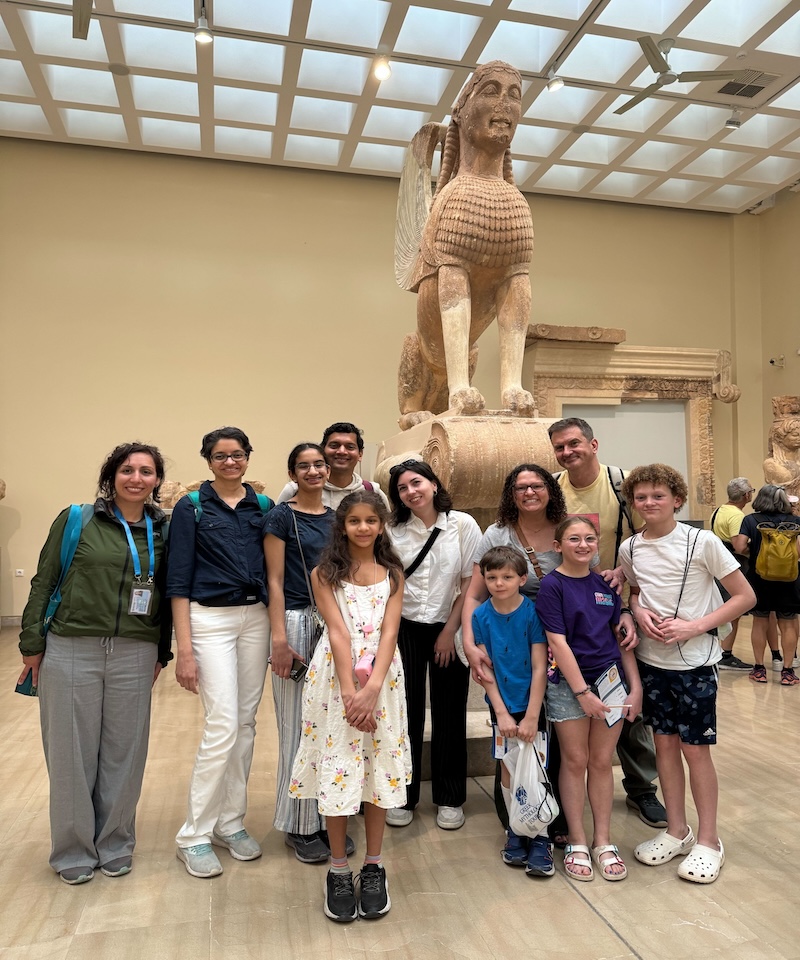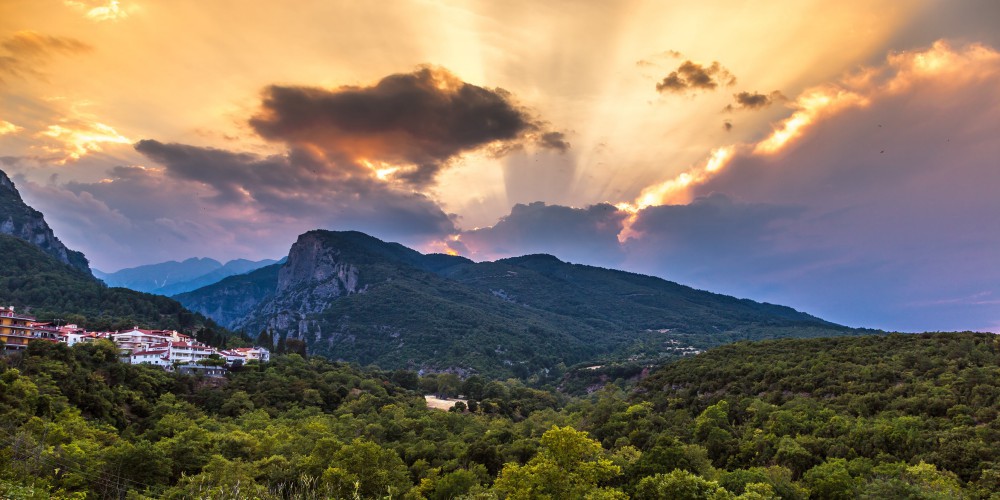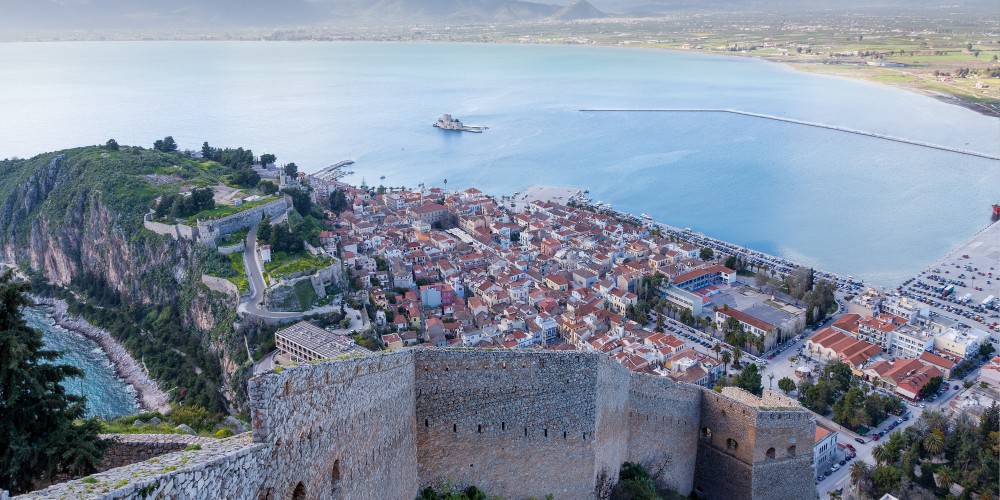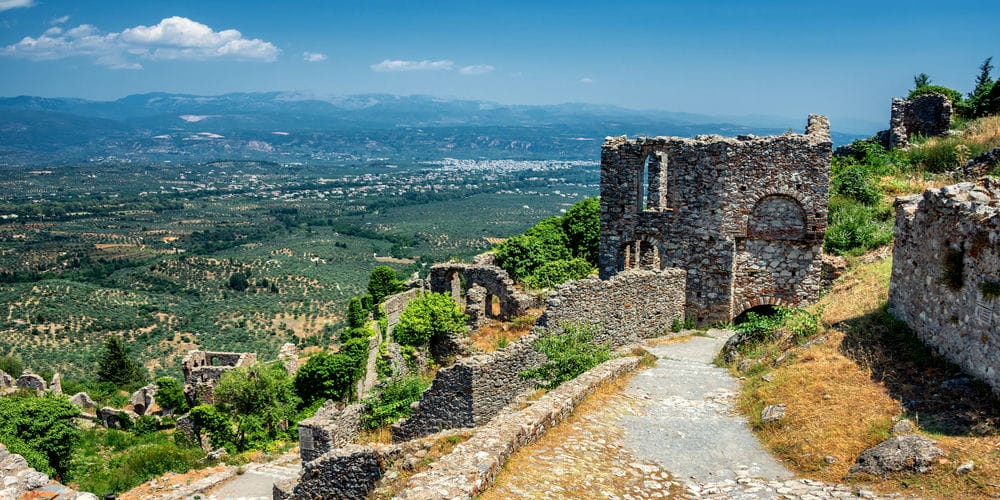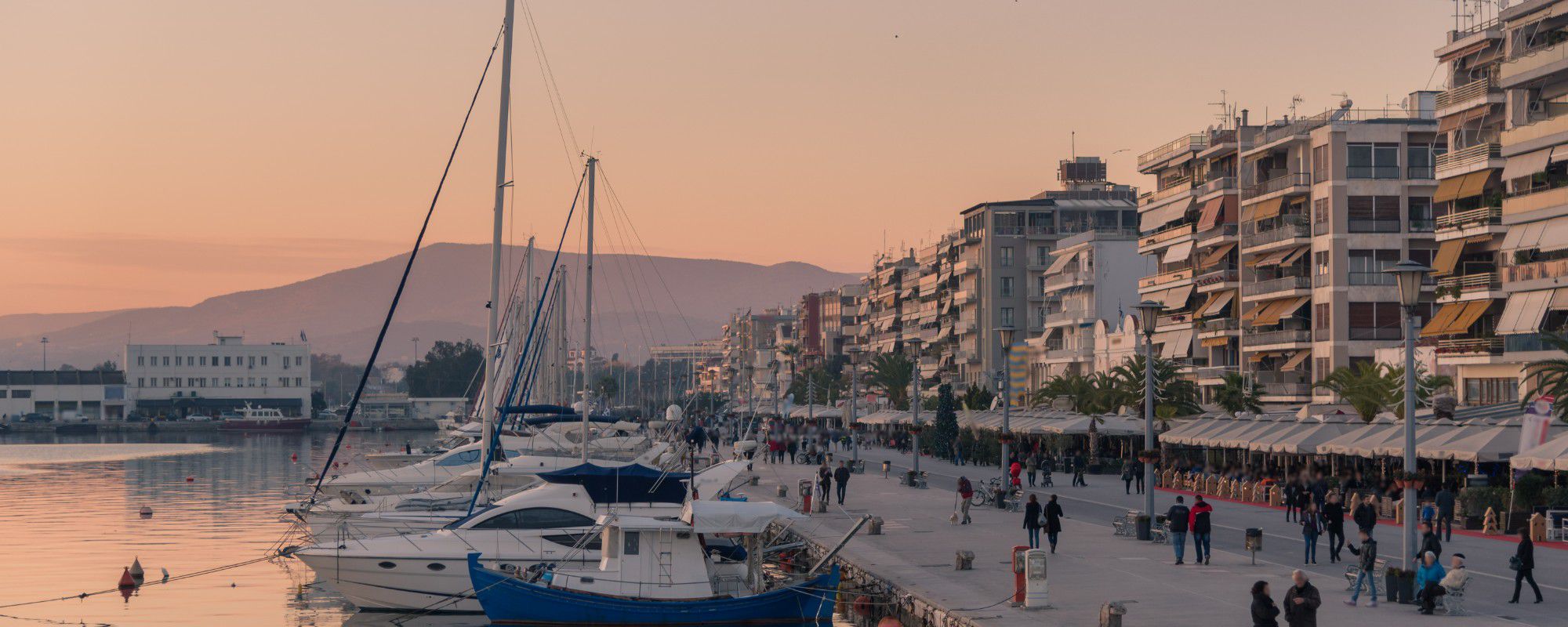
The History and Highlights of Volos
Key Takeaways:
- Volos is the sixth-largest city in Greece, with a population of approximately 140,000 people.
- The city is situated at the foothills of Mount Pelion, offering stunning views of the mountain and the sea.
- Visitors can explore the ruins of the ancient city of Demetrias, the historic harbor of Pagasae, and the Archaeological Museum of Volos.
- The city is known for its lively waterfront area, which is lined with cafes, bars, and restaurants.
Volos is one of the largest and most attractive mainland destinations in Greece as well as one of the most famous ports in the country. The modern city, built near ancient Iolkos, dominates the region of Magnesia, from its location at the foot of Pelion overlooking the Pagasetic Gulf.
This is one of the most beautiful areas of Thessaly, in the center of Greece, that combines the charm of the sea with the mysterious beauty of the mountain of Centaurs.
The mythical background of the area captures the imagination of the visitor. Magnesia appears in some of the most remarkable stories of Greek mythology.
In specific, according to Greek mythology, its people’s ancestor was Magnis, the son of Zeus or Aeolus. It was also believed that Magnesia was the birthplace of a strange breed, the Centaurs, creatures that were partly equine and partly human. Asclepius and Achilles were, among others, students of the Centaur Chiron.
The famous Argonaut expedition, one of the greatest epics of the Greek mythological cycle, sailed from the Pagasetic Gulf.
The wealth of the area and its ancient history have left their mark on the architecture of the city, which exudes confidence and grandeur of true Greek origin, competes with other European countries, and wins.
Numerous mansions, town halls, museums, industrial facilities in the early 20th century, and magnificent churches make touring Volos city truly enjoyable.
In ancient times
The Castle of Volos - credits: kastra.eu
The wider area of Volos gathers some of the most important Neolithic sites of the entire Balkan Peninsula. Archaeological excavations in the area have brought to light about forty Neolithic settlements, several of which continued their activities during the Bronze Age.
The most important Neolithic settlements were discovered by archaeologist Christos Tsountas in the early 20th century in Sesklo and Dimini. In these places, the researchers revealed ceramics, bone and stone tools, as well as obsidian objects that came from Milos.
Important Mycenaean sites have been discovered on the hill of Agios Theodoros, in the current district of Volos Palia, and in Pefkakia. The foundation of Iolkos, an important economic and spiritual center of the region, dates back to the Mycenaean period, which is directly connected with the famous myth of the Argonaut campaign.
Older researchers estimated that the location of Iolkos was in Palia. However, more recent archaeological finds substantiate the view that the seat of the kings of Iolkos was not in Palia, but in Dimini. There was the center of economic activities based on agriculture and livestock, while commercial activities took place from the port of Pefkakia.
Volos - credits: thenewspaper.gr
In 293/92 BC. the king of Macedonia, Demetrios, founded the town of Demitriada on the peninsula now called Pefkakia, uniting the Pagases with various neighboring comas. Demitriada was a strong military base and stronghold of the Macedonians. At the same time, it developed into an important commercial center during the period from 217 to 168 BC.
In the eastern part of the city was the palace, to the south the market, and to the west the theater. Many tombstones have been found in the area that gives interesting facts about the economy, society, and art of the time. In 197 BC. Demitriada fell into the hands of the Romans.
From the early Christian to the post-Byzantine years
Volos - credits: grecomania.com
Demitriada continued to flourish during the Roman conquest. Together with Fthiotides Thebes, which were located in today's Nea Anchialos, they were the most important centers of early Christian and Byzantine Thessaly, constituting the outlet of the hinterland to the sea. In fact, from the 5th c. AD, Demitriada became the seat of a bishop.
At the end of the 6th century, due to the Slavic invasions, the Fthiotides Thebes were abandoned among other ancient cities, while the inhabitants of Demitriada took refuge on the hill of Agios Theodoros in Palia, where there was a settlement fortified by the emperor Justinian. In the following centuries, the city lost its importance, as it was insecure in the attacks of Saracen pirates.
In 1204, after the conquest of Constantinople by the Crusaders, Demitriada was given to the Melissians, a famous Byzantine family. In the 14th century, the place name Volos is found for the first time. In 1423 the castle of Palea fell into the hands of the Ottomans. Then the Christian inhabitants began to leave the coastal areas and migrate to the hills of Pelion. Towards the end of the 16th century, the seat of Bishop Demitriados was moved to Ano Volos.
The Ottoman Empire
Volos and Pelion - credits: amateurtraveler.com
During the Turkish occupation, the economic and intellectual activity of the region was transferred to Pelion, which was favored by the privileged status granted to it by the Ottoman conquerors.
From the 17th c. and until the Revolution of 1821, Pelion developed into one of the most important first industrial and intellectual centers of Greece. At the same time, the castle of Volos was an exclusive area of the Ottomans, where the settlement of Christians was forbidden or avoided.
During the outbreak of the Greek revolution of 1821, the villages of Pelion took the side of the revolutionaries, but the Turks managed, by force, to suppress the uprising within a year. The castle of Volos was besieged by Spetses ships without success.
Volos bus - credits: magnesianews.gr
The current city of Volos began to be built outside the old castle shortly after 1830. Its favorable geographical position, due to the port, contributed to its development into an economic center of Thessaly. After the Russo-Turkish War of 1877 and the Conference of Constantinople in 1881, Thessaly was ceded to the modern Greek state, and on November 2, 1881, the Greek Army entered the city of Volos.
During the Greek-Turkish war of 1897, Volos fell again into the hands of the Turks. The inhabitants of the area were forced to seek refuge on neighboring islands, but after a few months, the Turks left.
In recent years
Volos - mixanitouxronou.gr
Two years after the liberation of Thessaly, the Municipality of Pagasson was founded, the predecessor of the current Municipality of Volos. The development of the new city was rapid.
The handicraft and agricultural tradition of Pelion, its port, as well as the neighborhood funds that flowed into the area, were some of the factors that favored the economic development of the city with the main directions of trade and industry. Another reason was the support of the Greek National Tourism Organisation
The favorable position and the rapid economic development of the city attracted residents and investors from other areas. The brief occupation of Volos during the Greek-Turkish war of 1897 did not have long-term effects on its development.
In 1886, the railway connection of Volos with Larissa and Kalambaka was completed. Also, in 1895, the railway line Volos-Lehonia began to operate, which extended to Milies in 1904.
At the same time, in 1892, the port landscaping works began, which continued after the First World War, to cover the growing handling needs. It should be noted that in 1919, the port of Volos was the first in tobacco exports to Greece, with an export rate of 30%.
Along with economic prosperity, significant cultural and social activity developed. In 1894 the Municipal Theater was founded, while in 1896 the Gymnastics Association of Volos was founded.
In 1908, the Higher Municipal Girl's School started operating, which was run by the pioneer educator Alexandros Delmouzos and was forcibly closed only three years later. In 1908 the Labor Center of Volos was also founded, the first in Greece.
The economic boom of the new city also attracted members of other ethnic or religious groups. It is no coincidence that in Volos there is a Jewish synagogue and a catholic church, which were built at the beginning of the 20th century. The famous Italian painter Giorgio de Chirico, son of the engineer Evaristo de Chirico, was born in Volos, and designed the Volos-Milea railway line.
The Asia Minor Catastrophe brought new blood to the developing city of Volos, at a time when it was in great need of labor. Refugees from Asia Minor initially settled in the empty spaces of the city. Around Riga Fereou Square, they set up an entire slum, which was destroyed by fire in 1930. Slowly, the new inhabitants of Volos moved to the NW suburbs of the city, in the "Refugees", which later formed the core of Nea Ionia.
World War II temporarily halted the development of the city. In the period 1941–1944 Volos was severely tested by the Italian and later the German occupation. This period is the only one during which the population of the city decreased. Many members of the resistance organizations, as well as ordinary civilians, were tragically killed in the city streets, and in the execution sites.
The Jewish community of Volos, one of the oldest in Greece had the fewest losses than any other Jewish community in Greece, thanks to the timely and dynamic intervention and mobilization of EAM-ELAS, but also the successful consultation of Metropolitan Demitriados Ioakeim and Archbishop Moses Pesach for the evacuation of Volos from the citizens of Jewish origin, after the events of Thessaloniki - in specific, the displacement of the Jews of the city in the concentration camps.
After the war, Volos developed into one of the most important urban complexes in Greece, from an economic and demographic point of view. In May 1947, by royal decree, the Municipality of Nea Ionia Volos was founded. On February 26, 1954, the Municipal Council of the Municipality of Pagasa, decided to rename the municipal authority to "Municipality of Volos". The following year, two earthquakes, on April 19 and April 21, 1955, destroyed almost a quarter of the buildings and the city changed its appearance.
Some of the neoclassical buildings of pre-war Volos were lost forever and in their place appeared the small post-earthquake houses. Unfortunately, even these beautiful post-earthquake detached houses were lost in the era of compensation (1970–2000), to be transformed into amorphous apartment buildings.
The modern Volos
Volos city centre- credits: discovergreece.com
The industrial development that Volos and its city center experienced did not have a similar continuity during the second half of the 20th century. Large factories ceased to operate.
The operation of the Industrial Zone since 1969 led to a temporary industrial boom with the establishment of new industries. But in the mid-1980s, the deindustrialization of Volos began to become a fact.
Today, some large industrial units are still operating in the area, however, the economy of Volos is now based mainly on trade, services, and tourism, and secondarily on handicrafts and industry.
In 1984 the University of Thessaly was founded with headquarters in Volos and schools or departments in all Thessalian cities. The University, which accepted the first students in 1989, gave a new breath to the spiritual life of Volos, a breath that the city centre absolutely needed. The Municipal Theater, the Conservatory, as well as the Symphony Orchestra of the city, are worth noting in the arts of Volos.
In 2004, Volos became an "Olympic city", after hosting some football matches within the framework of the Olympic Games. The games took place at the new state-of-the-art Panthessalian Stadium, which was built for the needs of the Olympic Games.
Utilizing the tradition of the 2004 Olympic Games, Volos organized the European Gymnastics Championship and part of the World Billiards Championship in 2006.
The best places to visit in Volos
1. Athanasakeion Archaeological Museum of Volos
Athanasakeion Archaeological Museum of Volos - credits: gtp.gr
One of the oldest museums in Greece, the Archaeological Museum of Volos hosts exceptional finds from the beginning of the 20th century to modern archaeological excavations in Thessaly. It was built in 1909 in a ground-floor neoclassical building with a total area of 870 sq.m.
The Archaeological Museum of Volos hosts archaeological finds from the Neolithic period to the Roman years. The exhibition is developed in eight rooms on the ground floor of the old and new building and includes findings from the archaeological excavations carried out in the Prefecture of Magnesia from the beginning of the 20th century to the present day.
Informative texts, drawings, and photographs help the visitor to obtain a detailed view of the type and use of archaeological finds in antiquity and also of the archaeological sites from which they come.
In its rooms, one can find objects from the Neolithic settlements of Sesklo and Dimini, clay figurines and utensils of the geometric era from the castle of Volos, Pefkakia, Naples but also from areas of the wider Thessaly area, sculptures of the classical era and figurines, reliefs of the Alexandrian era from Demitriada.
Particularly important exhibits are, of course, the rarely written columns of the 3rd BC. ai., which preserve paintings of the ancient Greeks in marble works of art.
Another impeccable museum that is proof of the region's long history is the Rooftile and Brickworks Museum, which is perfect for those who are fans of architecture and construcion.
2. Tsalapatas Museum
Tsalapatas Museum - credits: greece-is.com
A well-designed space that deserves to be given due importance. A former industrial site, which has been transformed into a fully visitable museum and highlights the wider industrial heritage of Volos and Magnesia.
The visit becomes especially interesting through the moving and fixed models of the old factory, the levers, and buttons that children are allowed to use, and also the interior of the impressive oven for baking bricks and tiles.
Do not miss the very useful description-narration of the employee at the reception. The place also has a very nice café for a coffee or a snack, where you can see the locomotive and the wagons that transported the clay. The regular ticket costs just 3 €.
3. Sesklo Archaeological Site
Sesklo Archaeological Site - credits: livelikelocal.gr
Just outside the city of Volos, are the villages of Dimini and Sesklo, the most systematically excavated Neolithic sites in Thessaly, which offer us valuable information about the architecture and economic organization of prehistoric settlements.
At a distance of 15 km. from Volos, near the present village of Sesklo are the ruins of the prehistoric settlement of Sesklo, on the hill ‘Kastraki’. The first excavations were made in 1901-1902 by the archaeologist Chr. Tsounta while in 1956 D.R. Theocharis began a new excavation that lasted until 1977.
The rare finds and relics that came to the surface testify that the settlement was inhabited from the 7th millennium BC. People then lived from agriculture and animal husbandry, as evidenced by the bone tools, obsidian blades, and stone tools found in the various excavations.
The houses were originally made of tree branches and mud, while in the Early Neolithic era the foundations were made of stone and the floors were made of clay. In the Middle Neolithic era, the settlement grew to the west, the houses were larger and formed small streets between them and in some places squares.
Shortly before the end of the 5th millennium, the settlement was probably deserted by fire and re-inhabited after 500 years and only on the hill of Kastraki. The archeological site of Sesklo is considered one of the most important Neolithic settlements in both Greece and Europe.
4. Mount Pelion
Pelion - credits: greeka.com
Pelion is another reason why Volos stands out. Although a seaside town in a short time can take you to the most idyllic mountain landscapes. Pelion is a mountain in the Prefecture of Magnesia next to the city of Volos, with a height of 1,624 meters.
According to Greek mythology, it was the summer residence of the gods, the birthplace of the Centaurs, and the place where the marriage of Peleus, king of the Myrmidons and father of Achilles, and Nereid Thetis took place.
The whole mountain is overgrown with forests with tall beeches, oaks, plane trees, chestnuts, pines as well as clusters of hybrid fir. At lower altitudes, there are apple orchards on the eastern slopes and olive groves on the south. A special feature is its hydrological nature as the eastern slopes receive very large amounts of rain and snow that far exceed the average price of lowland Thessaly.
The mountain village of Pelion has rich vegetation all year round. Apples, pears, peaches, lemons, almonds, chestnuts, walnuts, oil, olives, tea, and thyme are mainly grown, while local specialities, such as pastries, noodles, 'trachanas', tsipouro, honey, and basil are produced by small producers and cooperatives and can't be found in the same quality in any other cities.
Due to its diversity, it attracts many visitors, both in the winter and summer months. In winter it is preferred by those who want to enjoy the beautiful mountain and the fresh air, the snow, ski and get in touch with nature, while in summer the vacationers enjoy the best beaches of Pelion for swimming, water sports, and hiking.
In Pelion, you will see what we call genuine traditional settlements. You will drink your coffee with a unique view, you will walk on picturesque cobbled streets and you will try local Pelion recipes. And all this just an hour away from Volos.
5. Portaria
Portaria - credits: orminioportaria.gr
One of the most popular villages of Pelion and the whole country, Portaria combines the atmosphere of the authentic Pelion settlement and the unsurpassed view of the city of Volos and the Pagasitikos with the intense tourist development.
Its guests choose it for holidays all months of the year, with a peak period in winter. Its picturesque nature, natural beauty, and its close proximity to both the ski center of Pelion and the sea make it an ideal destination and starting point for excursions throughout Pelion.
Luxury hotels, traditional hostels, rooms to let, restaurants and taverns, cafes, bars, souvenir shops, and folk art make up a complete tourist destination for all tastes.
Trees and flowers adorn the cobbled streets, traditional stone houses, and squares, while throughout the village, there are great mansions, ornate stone fountains, churches, and monuments.
Particularly beautiful and picturesque is Melina Mercouri Square, which is also the center of the village, surrounded by taverns and cafes, Adamenas Square from where the path to Pigi Manas with its age-old plane trees starts, but also Taxiarchon Square with its magnificent view and the picturesque stone church.
6. Centaurs’ Path
Centaurs’ path - credits: greeka.com
In beautiful Pelion is hidden a treasure that connects us directly with mythology! The reason for the "Path of the Centaurs."
This is a circular route of 2.7 km with a smooth slope that offers comfortable hiking. The path is located outside the village of Portaria and its end leads to the village itself. Is divided into two parts. The first, easier to walk, ends in the center of the village, and the second part, which is the largest, ends at the exit of the village.
Between the two sections of the trail, there is a fountain with drinking water and benches for rest before continuing on your way. You will find the entrance of the path departing from Portaria to the picturesque Makrinitsa, and it is definitely worth a short stop even if you do not have time for hiking. It is only 21 minutes from the city of Volos.
7. Pelion Railway
Pelion Railway station - credits: gtp.gr
On the mountain, there are dozens of famous traditional villages built with the unique Pelion architecture, with most of them being from the 15th-16th century.
An unforgettable experience is a route followed by the legendary 'Mountzouris,' the steamy train of Pelion, (operates, with breaks, since 1895 and connects the village of Lechonia, near the sea, with the village of Milies, at an altitude of 400 m.).
The beautiful route gives the opportunity for the passengers to enjoy the impressive mountain landscape, the sea view, and the wonderful mountain villages.
8. Anavros Park
Anavros Park - credits: greece.com
A pleasant surprise awaits the visitors of the coastal front after the Church of Agios Konstantinos in Volos.
Sidewalks for peaceful walks lead to small squares for stopping and recreation. There, on the borders of land and sea, scattered interesting white sculptures of open space in marble emerge, creating an open-air sculpture case, perhaps unique in Greece, which incorporates art in the urban landscape, Anavros Park.
The sculptures are works of European artists and were created within the framework of the 1st International Sculpture Symposium in Anavros in 1988.
Earlier, in 1986, as part of the renewal of the coastal zone of Anavros, the Greek sculptor Filolaos created a special sculptural composition entitled 'Shapes' of gravel, concrete, and stainless steel, materials that govern several works of the artist
The simple, symbolic composition of the four figures in a prominent position with a natural background of the blue of the sea together with the rest of the sculptures enrich the idyllic natural landscape and appreciate the presence of Art in any space with a visit for free. They are also a great way to encourage the enjoyment of art by children, who would hardly visit a gallery. However, even the older ones have the opportunity to enjoy the work all year round, either in the autumn light or even in the snow.
9. Alykes Beach
Alykes beach - credits: greece.com
Alykes beach is located in the SE of Volos, about 9 km from the center. There is an organized municipal beach, but also areas with free access along the beach of Alykes, which extends by 5 km. There are many cafes, restaurants, hotels, and free spaces.
It has been awarded the Blue Flag several times and offers a perfect taste of the Aegean sea.
10. Hill of Goritsa
The hill of Goritsa - credits: wikipedia.com
Goritsa is a low hill 200 meters high, which overlooks the sea through the mountains of Pelion. The northern end of the hill joins the main volume of Pelion, creating a narrow strip.
The fact that from the height of the hill one can supervise the surrounding area and the Pagasetic gulf was the main reason why it was founded on it, around the middle of the 4th c. BC, a city by the Macedonian King Philip II in order to be an important strategic position in the context of a broader plan to establish strategic positions in Magnesia. Later it was fortified with strong walls, probably by Cassander.
The combination of the location of the ancient city with the natural environment gave the impetus in 2003 for the inclusion of the Archaeological Site of Goritsa in the European Project ECOSERT titled ‘European cooperation to achieve Sustainable Development through Tourism.’
In the framework of the Community program RECITE II, which aimed at achieving sustainable environmental development of ecological and cultural tourism, an effort was made for the overall development and utilization of the hill of Goritsa with the ultimate goal of creating an open archaeological park, where it can be combined with a leisurely stroll.
11. Theofilos Museum of Anakasia
Theofilos Museum of Anakasia - credits: volosinfo.gr
A few meters above Ano Volos, in Anakasia, is the Museum of Theophilos, the great Greek folk painter. The Kontou house, which houses the museum, is one of the most important newer monuments in the region of Magnesia, as both it and its painted decoration are kept in excellent condition.
It is a unique case of a Pelion mansion that preserves a complete painting program of Theofilos. There, the visitor, through the illustration of the Greek folk tradition, discovers the greatness of the painter, who is rare in morality and artistic value. The children are thrilled with the authenticity and simplicity of Theofilos' work.
12. The Church of Agioi Konstantinos and Agia Eleni
The Church of Agios Konstantinos - credits: ecotourism-greece.com
The Church of Agios Konstantinos at the eastern end of the beach of Volos is a jewel of the city! Temple of majestic royal style with remarkable hagiographies.
The majestic building of the church and especially at night illuminated, is a unique decoration for the city, and the location of the church on the beach gives Volos another important attraction. It is worth visiting when you go to Volos!
13. Tsipouradika
Volos’ famous ‘tsipouradika’ - credits: volosinfo.gr
You will have heard that it is not possible to go to Volos and not make a stop at the tsipouro restaurants or ‘tsipouradika’ the region is famous for. Tsipouro restaurants are an integral part of Volos’ tradition.
They are the restaurants that serve tsipouro in combination with appetizers for every taste. From fresh fish and seafood to other traditional Greek dishes.
Picturesque and quintessentially Greek in every neighborhood of Volos, every noon, they are full of people. You can have over 40 local delicacies on your table. This gastronomic "institution," which has its roots in the '30s, will offer you the most authentic experience of Greek life.
Final Thoughts
Probably the most beautiful and certainly the most popular capital of Thessaly, with a rich history that takes you back to ancient Iolkos, the city of the Argonauts.
Volos owes its charm mainly to its wonderful beach, the good road plan, the neighboring Pelion, and of course, its famous tsipouro restaurants, a ritual that was started probably by the refugees from Asia Minor in 1922 and became an institution.
Frequently Asked Questions
How do I get to Volos, Greece?
What is the best time to visit Volos?





